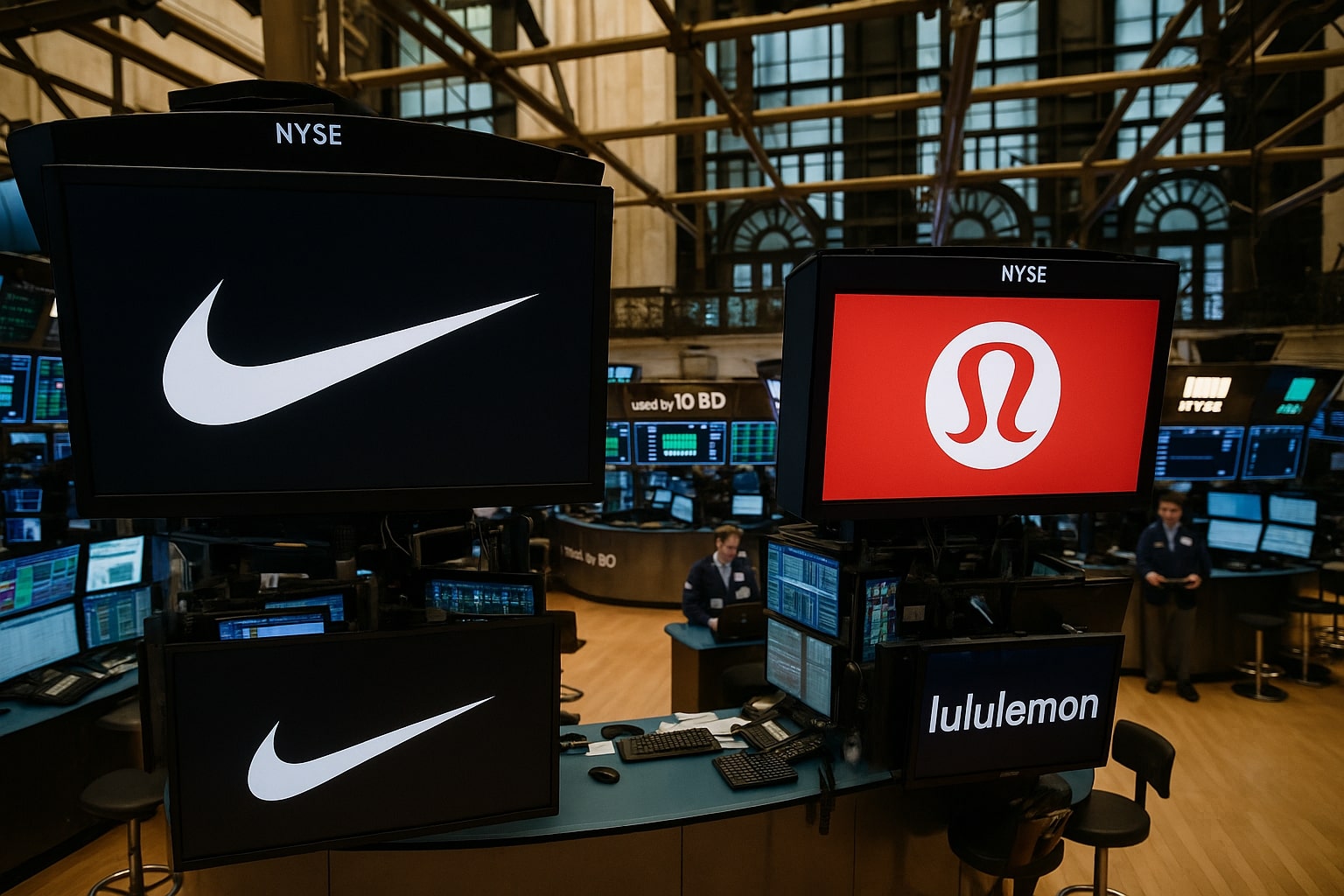
Lululemon Stock vs Nike Stock: Which Stock Wins on Growth and Valuation?
Nike (NYSE:NKE) trades near $72.96 with a rebound case, while Lululemon (NASDAQ:LULU) drives premium growth | That's TradingNEWS
Lululemon (NASDAQ:LULU) vs Nike (NYSE:NKE): Growth Momentum Against Recovery Play
Lululemon Athletica Inc. (NASDAQ:LULU) and Nike Inc. (NYSE:NKE) are moving in very different cycles, and the divergence between the two tells the story of premium growth versus a global brand in transition. Both stocks trade in the consumer discretionary space, but their valuation, profitability, and market positioning paint contrasting pictures that investors cannot ignore.
Stock Price Performance and Valuation Contrast
Nike (NKE) is trading at $72.96, down nearly 9% over the last twelve months, pressured by a 12% year-over-year revenue decline in its most recent quarter and weak earnings of just $0.14 per share, an 85.9% drop from the prior year. The company now carries a trailing P/E ratio of 33.8 and an even richer forward P/E of 43.7, suggesting Wall Street expects a recovery but has not yet seen evidence in the fundamentals. Analyst targets for NKE are split: the average sits at $79.59, but the range is wide, from $71 on the low end to $120 on the high end, signaling major uncertainty on execution.
By contrast, Lululemon (LULU) has managed to defend premium valuations with strong brand equity in yoga, athleisure, and women’s performance wear. While the latest data you shared focuses more on Nike, the consensus is that Lululemon’s trajectory remains anchored in growth. Historically, LULU has traded at higher price-to-sales and P/E multiples than Nike because its top-line expansion has consistently outpaced larger incumbents. With Nike revenue slipping to $46.3 billion TTM, Lululemon has been eating into key demographic segments, particularly female athletes — an area Nike is only now doubling down on with launches like Caitlin Clark’s upcoming signature shoe.
Earnings Power and Profitability Gap
Nike’s net income fell to $211 million last quarter, with margins squeezed by tariffs, supply chain shifts, and heavy promotional activity. Profit margin stands at 6.95%, well below its long-term averages. Its return on equity is still high at 23.3%, but that is partly a function of leverage, with a debt-to-equity ratio of 83.4%. Analysts forecast Nike’s EPS will fall to $1.69 in 2026 before rebounding to $2.49 in 2027, underscoring a two-year turnaround story.
Lululemon, on the other hand, maintains stronger operating margins in the mid-to-high teens and has not had to lean as heavily on debt to fund its growth. Its asset-light model, direct-to-consumer strength, and higher revenue per store allow it to sustain profitability even in a tougher retail environment. This puts LULU at a structural advantage while Nike is still recalibrating its strategy after years of digital overreach under Donahoe and a recent push back to wholesale.
Dividends, Cash Flow, and Shareholder Returns
Nike offers investors a dividend yield of 2.19%, with an annual payout of $1.60 per share. However, its payout ratio is already stretched at 72.7%, meaning future dividend growth is limited unless earnings rebound. The company generates $3.7 billion in operating cash flow and maintains $9.15 billion in cash, but given the combination of falling revenue and high leverage, capital allocation flexibility is constrained.
Lululemon does not pay a dividend, focusing instead on reinvesting in brand expansion, international growth, and innovation. For growth-oriented investors, this makes LULU more attractive, as every dollar is being directed toward scaling the business rather than sustaining shareholder payouts. For income-seeking investors, Nike remains the dividend option, though with higher risk if earnings continue to stagnate.
Institutional Sentiment and Insider Activity
Nike’s institutional ownership is high at 84.3%, but insider selling is notable — Chairman Mark Parker sold 110,000 shares at $72.29, worth nearly $8 million, trimming his stake by more than 11%. This raises concerns about insider conviction, particularly as the stock struggles near its 52-week low of $52.28.
See insider activity: Nike Insider Transactions.
Lululemon has seen steadier institutional flows, with fewer red flags from insider transactions. While Nike needs to rebuild confidence through execution, LULU benefits from a perception of consistent delivery and stronger leadership stability.
Analyst Outlook and Investor Positioning
Nike is widely seen as a recovery play, with analysts split between those calling for a rebound toward $120 and those warning of downside toward the low $70s. Its valuation assumes a turnaround that is not yet proven. The risk/reward equation leans heavily on execution in women’s sports, inventory discipline, and tariff navigation.
Lululemon, in contrast, continues to command premium multiples because growth visibility is clearer, especially in international expansion and female performance categories. However, its valuation is far less forgiving — any slip in momentum could drive a sharper correction.
Verdict: LULU Growth Edge vs NKE Recovery Gamble
Between the two, Lululemon (NASDAQ:LULU) is the cleaner growth story with higher margins, stronger demand drivers, and fewer execution risks. Nike (NYSE:NKE) at $72.96 represents value if management successfully delivers on its turnaround plan, but it carries more uncertainty and depends on a rebound in both U.S. and global wholesale demand. Investors seeking stability and upside may prefer LULU, while contrarians looking for a deep value turnaround could take a Buy stance on NKE below $75, betting on a medium-term climb back toward $90–$100.
Check real-time chart: Nike Stock Price Chart.
That's TradingNEWS
Read More
-
SCHG ETF Near $33 High As AI Giants Drive 19% 2025 Rally
01.01.2026 · TradingNEWS ArchiveStocks
-
XRP-USD Stuck At $1.87 As XRPI Near $10.57 And XRPR Around $14.98 Despite $1.16B ETF Wave
01.01.2026 · TradingNEWS ArchiveCrypto
-
Natural Gas Price Forecast - NG=F Slides Toward Key $3.57 Support As Ng=F Extends 33% Drop
01.01.2026 · TradingNEWS ArchiveCommodities
-
USD/JPY Price Forecast - Yen Near 156 As Fed Cuts Meet Boj Hawkish Turn
01.01.2026 · TradingNEWS ArchiveForex


















